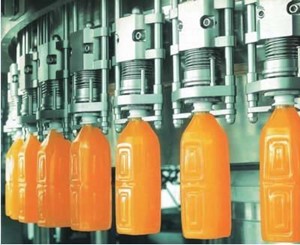
Hot Filling vs. Cold Filling
Hot Filling vs. Cold Filling
Hot filling and cold filling are two methods of contract packaging (or co-packing*) perishable food products and liquids. Understanding the nuances of these methods is essential to determine the best approach for your product.
Hot Filling in Contract Packaging
Hot filling is a process where both the product and the container are sterilized using heat. This method involves heating the product to temperatures between 194 and 203 degrees Fahrenheit, and maintaining these temperatures for at least 15-20 seconds. This ensures that any bacteria present are effectively eradicated.
Key Steps in Hot Filling:
- Sterilization: Both the product and container are heated to high temperatures.
- Cooling: The container is cooled to 180 degrees Fahrenheit and then sealed.
- Final Cooling: The sealed package is allowed to cool down to room temperature.
Hot filling is particularly suitable for acidic food products such as sodas, vinegar, vinegar-based sauces, sports drinks, and juices. These products are often packaged in glass, cardboard, and specific heat-resistant plastics.
Cold Filling in Contract Packaging. Cold filling, on the other hand, uses extremely low temperatures to preserve the product. This method involves exposing the product and its packaging to ice-cold air, effectively killing bacteria. Cold filling also includes an additional step of wet or dry sterilization.
Advantages of Cold Filling:
- No Preservatives: Unlike hot filling, cold filling doesn't rely on preservatives or additives.
- Dairy Products: This method is ideal for dairy products, as it helps maintain the product's quality and freshness.
Cold filling is compatible with a wide range of packaging containers, making it a versatile choice for various products.
Comparing Hot Filling and Cold Filling
When choosing between hot filling and cold filling for contract packaging or co-packaging, several factors need to be considered:
- Shelf Life: Hot filled products tend to have a longer shelf life.
- Cost: The hot filling process is generally less costly than cold filling.
- Safety: Hot filling is considered safer to conduct due to the high temperatures used for sterilization.
- Product Type: Hot filling is best for acidic products, while cold filling is preferred for dairy products and other items sensitive to heat.
The Role of Fill Temperature
It's important to note that hot filling and cold filling are preservation methods, not to be confused with fill temperature. Fill temperature affects the viscosity of the liquid, which in turn impacts the accuracy of the packaging machine.
Key Takeaways
Both hot filling and cold filling play crucial roles in contract packaging and co-packaging. By understanding the differences and advantages of each method, businesses can make informed decisions to ensure the safety, quality, and longevity of their products. Whether you opt for the heat-based sterilization of hot filling or the preservative-free approach of cold filling, choosing the right method is key to successful packaging.
Co-packing, or contract packaging, involves the entire process of assembling a product into its final packaging. Partnering with an experienced co-packer can help navigate the complexities of hot and cold filling, ensuring your products are packaged efficiently and safely.







